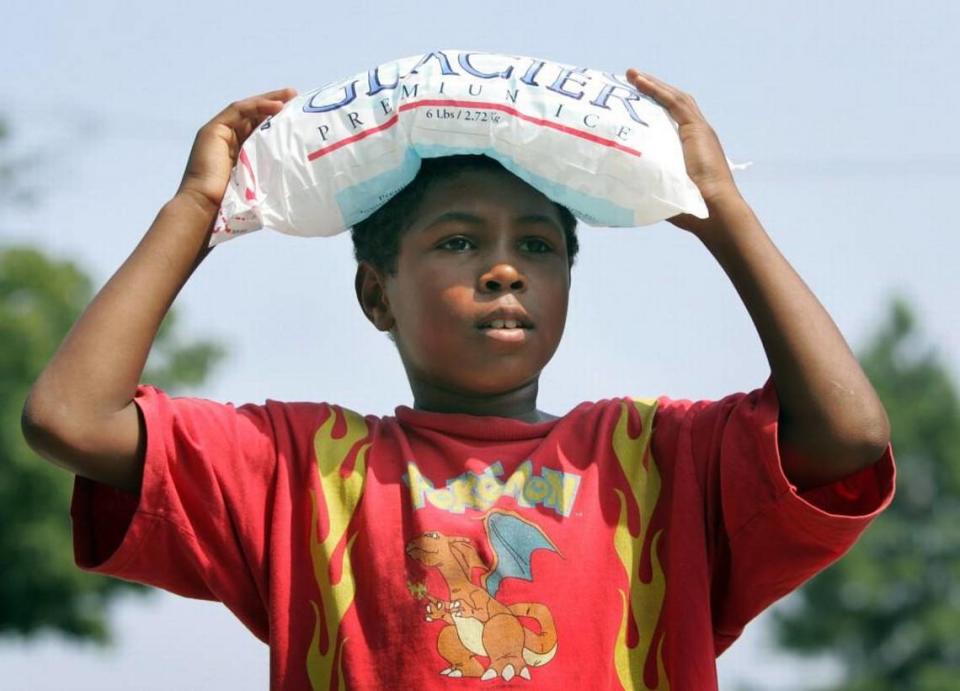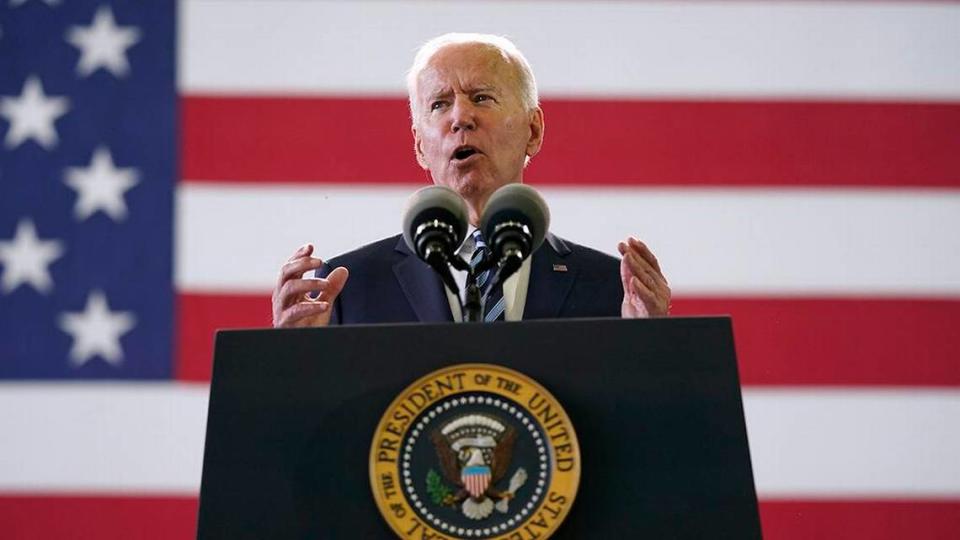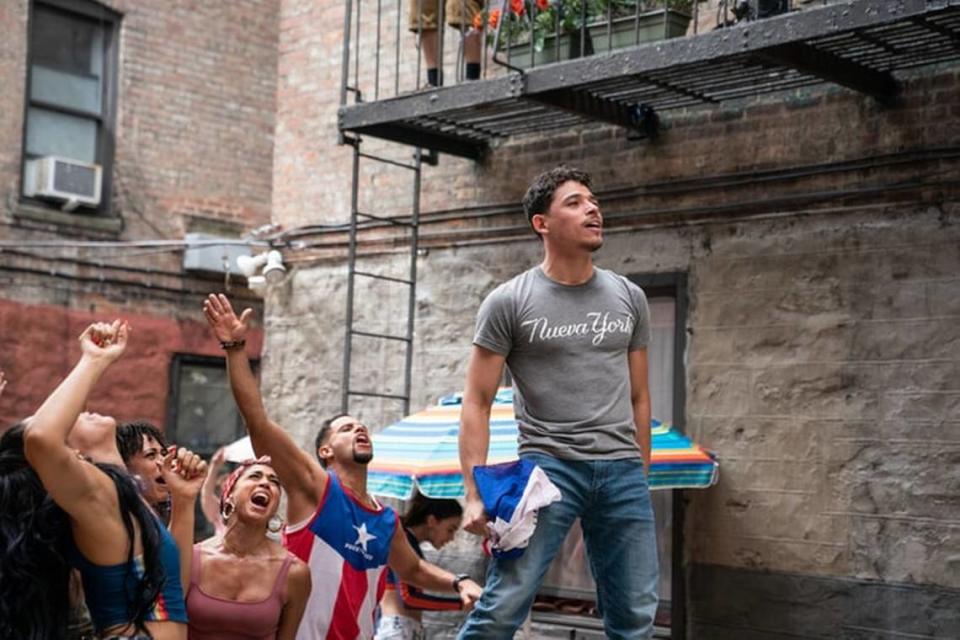On The Vine: Black as hell

“Trey, you’re so black, when you die you’re going straight to hell.”
It’s crazy, but I remember that every day as if it happened yesterday. I remember very little from childhood, but those words — which if I’m being honest are actually pretty inventive — from a Swinney Elementary cohort have stuck with me for more than 20 years.
So has being called “darkness” — the snickers to follow — by classmates at Truman High School. Kids can be mean, sure, but these barbs and slurs ran deeper. Skin deep.
I am, at least by all appearances, Black. And in all instances so were they. It’s just I was darker. I guess that made me an other to my others?
Colorism was something that plagued me for a long time, and it’s been (and still is) an issue in the Black community; and really among communities around the world. There’s an entire “side” of TikTok devoted to the hilarities in the difference between light-skin and dark-skin Black dudes.
The extent to which colorism is an affliction the world over didn’t truly hit me probably till I visited Kenya in college. There I was swept up in overwhelming emotion seeing everyone look like me, only to realize this tribe or that tribe were considered lesser because they were darker than the tribe over there.
Why am I vomiting childhood trauma’s to you in this newsletter today? Well, the colorism debate has reared its head recently as it relates to a movie I genuinely enjoyed, “In the Heights.” But more on that later. For now, let’s get into the news.
Around the block

Extreme heat is deadly. Where you live in Kansas City might increase your risk
Temperatures, as of late, have been unrelentingly hot. And extreme heat can be deadly. That risk is exponentially so for poorer urban communities — typically made up of people of color.
A research project gearing up to take place in Kansas City seeks to identify what neighborhoods across the city are hotter than the rest as an effort to provide resources and solutions that not only affect the quality of life of those living in hotter neighborhoods, but also affect their health as well.
The Star’s Bob Cronkleton writes:
In most cities, heat islands can be seen in some neighborhoods where it is considerably hotter — by as much as 20 degrees — than other neighborhoods. Those heat islands are often home to poorer communities of color, due largely to the historic practices of redlining, discriminatory lending and housing polices based on race, according to the National Oceanic and Atmospheric Administration...
Kansas City is among the worst when it comes to the difference of temperatures between the city and its surrounding rural area. It had the seventh greatest urban heat island intensity out of 60 cities analyzed in a 2014 study by the Climate Central.
Because those with lower median household income typically live in those areas, they tend to be affected the most by the urban heat island effect, the study found.
In case you missed it...
Kansas City NWSL scores first home goal of season, but a former KC star lifts Pride
Kansas City teen pastor Michael ‘Grizzy’ Griswold dies from COVID-19 at age 39
Johnson County teen raped by classmate says school didn’t protect her. ‘It was insane’
Chiefs player’s felony arrest sends wrong message to a city plagued by gun violence

Here’s how Kansas’ first transgender lawmaker fought for LGBTQ children and herself
Stephanie Byers, 58, is the first openly transgender woman to serve in the Kansas Legislature. She is one of seven transgender lawmakers nationwide, entering office as efforts to ban transgender students from girls sports and limit access to medical care swept the nation.
Katie Bernard writes for The Star:
“Do they just compartmentalize that much? Do they look at me and go, ‘But you’re different, but you’re special?’” she asked in a recent interview looking back on her first session. “Or do they go, what I see as the roots of my identity, that it’s fundamental to who I am, and they’re thinking that this is just a choice that I made?”...
Heading into her first year, Byers said she knew her mission would not be promoting new legislation but instead warding off measures she viewed as harmful.
Her colleagues in the Democratic caucus say her advocacy was key to defeating a bill banning transgender students from girls and women’s sports.
“I don’t know what the outcome would have been without her voice,” said Rep. Lindsay Vaughn, one of seven freshman Democrat women in the House. “She was uniquely positioned to be the champion for these issues and to fight for the rights of LGBTQ Kansans.”
Beyond the block

‘It has to end’: Biden targets illegal gun sales, rogue dealers in strategy to combat rising crime
President Joe Biden and Vice President Kamala Harris are taking on the gun violence epidemic across America.
On Wednesday, The White House announced a strategy to combat gun violence and other violent crime.
“This strategy implements preventative measures that are proven to reduce violent crime, and attacks the root causes – including by addressing the flow of firearms used to commit crimes,” The White House wrote in a statement...
“Now is the time to act. With the secondary consequences of the pandemic and the proliferation of illegal guns over the same period, we have seen increased violence over the past year and a half. Homicides rose 30%, and gun assaults rose 8% in large cities in 2020. The number of homicides in the first quarter of 2021 was 24% higher than the number of homicides in the first quarter of 2020, and 49% higher than in the first quarter of 2019. Black and brown Americans are disproportionately harmed by the direct and indirect consequences of gun violence.”
Of course for Kansas City, which saw a record number of homicides in 2020, gun violence has been one of the city’s major issues and focal points. Gun violence is actually the subject of a statewide journalism project The Star is undertaking in Missouri this year in partnership with the national service program Report for America and sponsored in part by Missouri Foundation for Health. Through that the paper has sought out to identify and analyze the determinants of gun violence and all the ways it can impact communities.
The White House laid out five key actions as part of the administrations plan to combat gun violence:
Stem the flow of firearms used to commit violence, including by holding rogue firearms dealers accountable for violating federal laws;
Support local law enforcement with federal tools and resources to help address summer violent crime;
Invest in evidence-based community violence interventions;
Expanding summer programming, employment opportunities, and other services and supports for teenagers and young adults; and
Help formerly incarcerated individuals successfully reenter their communities.
Joey Garrison for USA Today wrote:
The president’s announcement comes as he has been unable to gain Republican support in Congress to pass sweeping gun control legislation. Republicans plan to seize on the crime surge – and the “defund the police” mantra of some liberals – to attack Democrats in a bid to take back control of the House and Senate in the 2022 midterm elections.
“Folks, this shouldn’t be a red or blue issue,” Biden said in the White House State Room. “It’s an American issue. We’re not changing the Constitution. We’re enforcing it, being reasonable. We’re taking on the bad actors doing bad and dangerous things in our communities.”
Don’t miss these stories...
TikTok Left its Black Creators Behind. Now They’re Going on Strike
A Man Was Arrested After A School Board Meeting Erupted In Protests Against Critical Race Theory
For the culture

Sha’Carri Richardson Is Now the Fastest Woman in America
I don’t know what you’ve heard, but it’s about to be a Black girl summer!
I love Sha’Carri Richardson: the nails; the hair; the gall; the lashes; the got damn, unrelenting swagger; the emotion; the joy; the excellence.
Last weekend, the 21-year-old phenom sprinter from Dallas, Texas, became the fastest woman in the country, running a 10.86 100 m dash to secure a spot at the 2021 Summer Olympics in Tokyo. She did so in a manner, at least to my knowledge and memory, heretofore unseen.
Following her race, and a jubilant parade of Black girl magic, Sha’Carri told NBC: “I just want the world to know that I’m that girl ... and every time I step on the track I’m going to try to do what it is that me, my coach, my support team believe I can do and the talent that God blessed me to have. ... I’m never going to take an opportunity to perform in vain“
Check it out...
Meet the Incredible Black Female Olympians and Paralympians Vying for Gold at the Tokyo Games
‘I’m So Proud’: Biden Celebrates Athletes Carl Nassib And Kumi Yokoyama For Coming Out
Ohio Quadruplets Who All Graduated from Yale Say They Were Able to Carve Their ‘Own Paths’ at Ivy

‘In the Heights’ and Colorism: What Is Lost When Afro-Latinos Are Erased
Lin-Manuel Miranda’s “In the Heights” is nothing short of magic. To even have such a film made — a musical — centered in, on, and around New York’s vibrant and predominantly Hispanic Washington Heights neighborhood in Manhattan’s upper-most westside backed by a major motion picture studio is phenomenal.
And yet, there’s work to do.
But while the new film is a celebration of Washington Heights, it’s very easy to come away from it thinking that the community is entirely made up of mostly light-skinned Latinx migrants and immigrants. Though a large portion of the neighborhood’s real-life population is Black Latinx, in the movie, all but one of the main cast members are light-skinned — and many viewers immediately noticed what seemed to be the erasure of the Black Latinx community.
Discussion on social media about the film quickly focused on its perceived colorism — prejudice against darker-skinned Black people and positive bias toward those who are lighter-skinned. Conversation centered on an interview released June 9 between the film’s director, Jon M. Chu (Crazy Rich Asians), and the Root’s Felice León, in which she asked a clearly unprepared Chu, “What are your thoughts on the lack of Black Latinx people represented in your film?”
“That was something that we talked about and that I needed to be educated about,” Chu acknowledged. “In the end, when we were looking at the cast, we tried to get the people who were best for those roles.”
Concepción de León, a reporter for The New York Times, had this to say as part of round of thoughts and opinions from the paper’s journalists and critics:
I’ve been concerned about the issue of colorism in the film since the trailer was released. Aside from Leslie Grace, the Dominican-American actress who plays Nina, a Puerto Rican college student struggling with belonging and community at Stanford University, none of the lead actors are Afro-Latino. Hollywood has long valorized and highlighted fair-skinned Latinos over Afro-Latinos, often denying the latter roles that reflect their culture. It’s a limited and inaccurate representation of Latinos, who are diverse in culture and complexion.
But what makes these casting choices particularly egregious is that the movie is set in the Heights, which is known as Little Dominican Republic. At least 90 percent of Dominicans are of African descent, according to a recent population survey, and I am one of them. So why were we not prominently featured?
Ya me voy
Did someone forward this newsletter to you? You can sign-up here. If you’d prefer to unsubscribe from this newsletter, you can do so at any time using the “Unsubscribe” link at the bottom of this message.

 Yahoo Movies
Yahoo Movies 
